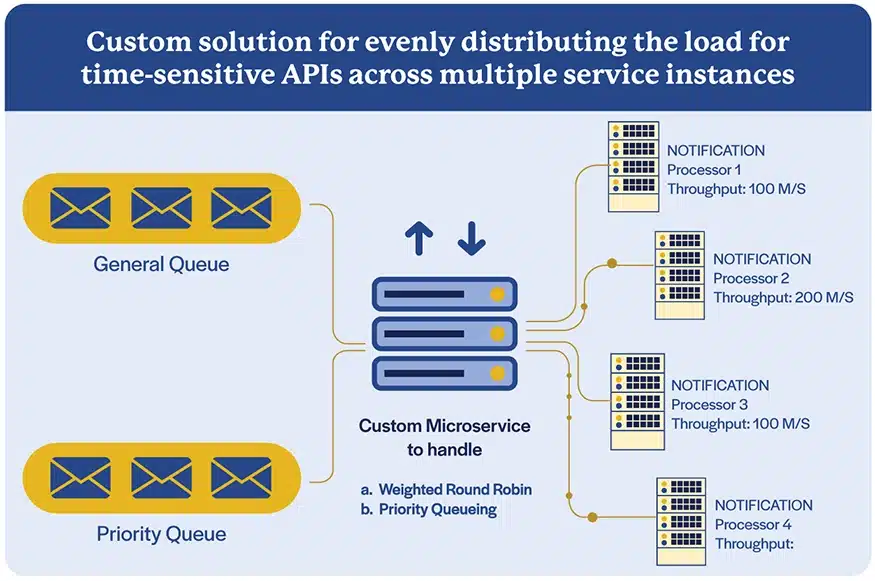Home » Services » Integration » Page 3

Platform migration increases API capacity by 6x
Migration of legacy API platform to Apigee and GCP and API productizing led to 6x higher capacity and 70% reduction in support tickets, enhancing business growth and customer satisfaction for a global logistics firm.

Our client, a leader in truck transportation and logistics services with more than 50,000 customers across 33 countries, had developed customer-facing APIs using earlier generations of API platforms. These APIs connected their transportation management system with several other critical systems such as GPS tracking, warehouse management, and real-time customer portals. Scalability and reliability issues were plaguing the client’s API management system due to the legacy infrastructure and increasing numbers of APIs, leading to poor customer satisfaction and decreased competitiveness.
The client sought a technology partner who could understand the complex business logic within the existing API structure and execute a seamless migration and modernization that would improve the performance and scalability of the APIs for its customers. A team of Apigee experts at Iris Software addressed the challenges with a comprehensive, customized four-step approach that consisted of:
- Outlining the migration strategy to move 18+ APIs to a more robust API Gateway
- Automating the migration from the legacy API Gateway to Apigee to ease customer transitions
- Balancing internal system loads to increase scalability and throughput
- Implementing Apigee analytics for improved traceability and faster mitigation of issues
Iris’ solution provided multi-market, multi-channel and multi-partner integration as well as other positive outcomes for the client:
- 70% reduction in support tickets related to shipment delays
- 6x increase in API throughput
- New revenue streams from the creation of four new API products
Learn more by downloading the full success story here.
Contact
Our experts can help you find the right solutions to meet your needs.
Get in touch




















